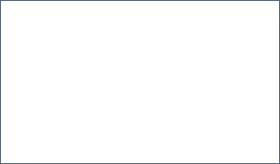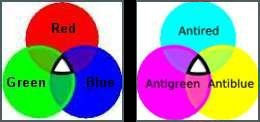This means "red-antiblue plus blue-antired". The constant "K", actually the square root of two, is a statistical requirement. Essentially, this says that there is a 50-50 chance of the gluon having red-antiblue color charge and a 50-50 chance of blue-antired color charge. Inside a nucleon like a proton, there is a constant exchanging of gluons by the quarks. In order to maintain the color balance, quarks can "swap" their colors via gluons.
The mass of a nucleon is partly the mass of the constituent quarks, and partly the mass equivalent of the energy of the field of gluons. This is called the "quantum chromodynamics binding energy", In fact, most of the mass of a hadron comes from the binding energy. Gluons act only between quarks. Before QCD, when protons and neutrons were considered fundamental particles, the strong force referred to the force holding protons and neutrons together in the nucleus. This is known now as the nuclear or residual strong force and, while not totally accurate, it can be understood as the interchange of virtual mesons like Pions.
There are two distinct, special properties of QCD:
Asymptotic Freedom
In very high-energy reactions, equivalent to very small separations, quarks and gluons interact very weakly. Thus, at these very high energies, the quarks within a nucleon start to move more freely.
Color charged particles like quarks cannot be isolated as individual particles. As we have discussed, they occur in groups within Hadrons. As two quarks separate, the gluon fields form narrow tubes of color charge, which act rather like a rubber band with the force between them increasing as the separation increases. At a given point, the amount of energy input to the system in the attempt to separate the quarks is sufficient to permit the generation of a Quark/Anti-quark pair, as permitted in quantum physics.
The mass of a nucleon is partly the mass of the constituent quarks, and partly the mass equivalent of the energy of the field of gluons. This is called the "quantum chromodynamics binding energy", In fact, most of the mass of a hadron comes from the binding energy. Gluons act only between quarks. Before QCD, when protons and neutrons were considered fundamental particles, the strong force referred to the force holding protons and neutrons together in the nucleus. This is known now as the nuclear or residual strong force and, while not totally accurate, it can be understood as the interchange of virtual mesons like Pions.
There are two distinct, special properties of QCD:
Asymptotic Freedom
In very high-energy reactions, equivalent to very small separations, quarks and gluons interact very weakly. Thus, at these very high energies, the quarks within a nucleon start to move more freely. Confinement
Color charged particles like quarks cannot be isolated as individual particles. As we have discussed, they occur in groups within Hadrons. As two quarks separate, the gluon fields form narrow tubes of color charge, which act rather like a rubber band with the force between them increasing as the separation increases. At a given point, the amount of energy input to the system in the attempt to separate the quarks is sufficient to permit the generation of a Quark/Anti-quark pair, as permitted in quantum physics.
In the diagrams to the left, the three colors combine to give white. A color and its anti-color also combine to give white. In a composite particle like a proton, for example, the net color charge must be zero. Thus, the three quarks in the proton each take one color giving a net color of "white". Similarly for an antiproton. In a meson, with a quark and an antiquark, the two take a color and its anti-color, for example green and anti-green, which, again, combine to give white.
In addition to the color charge, quarks also carry an electrical charge; Up, Charm & Top quarks have a charge of +2/3rds; the others of -1/3rd. Compare this to electrons and protons with charges of -1 and +1, respectively. Gluons also carry a color and an anti-color, but in this case it is somewhat different. Gluons take certain combinations of color charge; one of eight "color states" or gluon colors. As an example, one color state is described as:
(rb + br) / K.
In addition to the color charge, quarks also carry an electrical charge; Up, Charm & Top quarks have a charge of +2/3rds; the others of -1/3rd. Compare this to electrons and protons with charges of -1 and +1, respectively. Gluons also carry a color and an anti-color, but in this case it is somewhat different. Gluons take certain combinations of color charge; one of eight "color states" or gluon colors. As an example, one color state is described as:
(rb + br) / K.

Quarks and leptons are the fundamental building blocks of matter. Leptons comprise electrons, muons and tau particles, plus their associated neutrinos. Quantum Chromodynamics, or QCD, is a theory of the strong nuclear force acting on Quarks and the Gluons that hold them together to make Hadrons. Hadrons, for example protons and neutrons, comprise three quarks each. Mesons, for example Pions, each comprise one quark and one antiquark. Quarks and gluons have a property that is, somewhat whimsically, called "color". The underlying property can take one of three values, and for quarks these are called red, green, and blue, while an antiquark can be antired (cyan), antigreen (magenta), and antiblue (yellow). Of course, this is just a convenience; the property has nothing to do with colors as we perceive them.

Quark "colors"
Antiquark "colors"
Physics
-
Quantum Physics
Quantum Chromodynamics
Menu:

